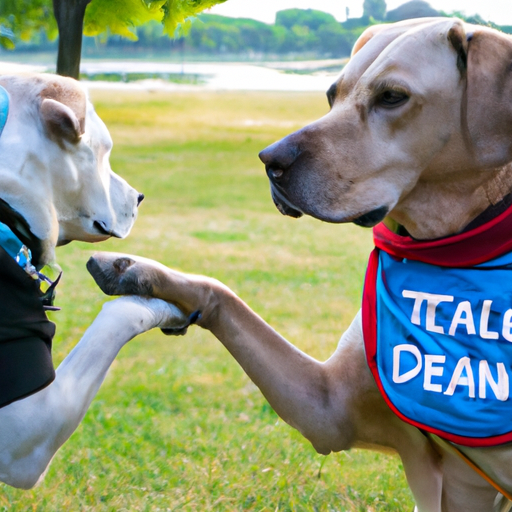Is your dog overly enthusiastic when it comes to meeting other dogs? Does their excitement sometimes translate into unruly behavior? If so, this guide is for you. Here, we will go through five major strategies that you, as a caregiver, can implement to help your pet develop better social skills.
Understand Your Dog’s Behavior
First and foremost, it’s essential to understand why your dog behaves the way they do. Dogs are social creatures by nature, and they express their excitement in different ways. While some may be calm and composed, others might get jumpy or aggressive. Understanding your dog’s behavior and triggers can help in training them effectively.
- Fearfulness: Dogs that are afraid may growl or bark at other dogs.
- Excitement: Some dogs may jump or bark out of sheer excitement.
- Dominance: Dogs may show aggression to establish dominance.
| Behavior | Possible Reason |
|---|---|
| Growling, barking | Fearfulness |
| Jumping, barking | Excitement |
| Aggression | Dominance |
Introduce Positive Reinforcement
Positive reinforcement is a great way to encourage good behavior in your dog. Reward your dog with treats, praises, or petting whenever they respond calmly to other dogs. This will help them associate calm behavior with positive experiences.
- Start with a calm environment.
- Introduce another dog from a distance.
- Reward your dog for calm behavior.
Gradual Exposure
Gradual exposure to other dogs can also be beneficial. Start by introducing your dog to others from a distance. Over time, decrease this distance while ensuring your dog remains calm. This method, known as desensitization, can be very effective.
- Week 1: Keep a distance of 10 meters.
- Week 2: Decrease the distance to 5 meters.
- Week 3: Allow your dog to sniff other dogs.
Train Your Dog to Obey Commands
Command training is another effective way to manage your dog’s behavior. Train your dog to obey commands like ‘sit’, ‘stay’, ‘no’, etc. These will come in handy during the socialization process.
- Start with basic commands.
- Practice regularly.
- Use these commands while socializing your dog.
Provide Regular Exercise
Regular exercise helps in reducing your dog’s energy levels, making them calmer. An exercised dog is less likely to get overly excited or aggressive. Make sure to provide your dog with plenty of physical and mental stimulation.
- Daily walks or runs.
- Play fetch or tug-of-war.
- Puzzle toys for mental stimulation.
FAQ’s
Q: How long does it take to train a dog?
A: It varies depending on the dog and the training method used. Consistency and patience are key.
Q: What if my dog doesn’t respond to treats?
A: Find out what your dog loves. It could be a favorite toy or a belly rub.
Q: My dog is aggressive with other dogs. Can this method help?
A: Yes, but it may take time. If your dog’s aggression is severe, consider seeking help from a professional trainer.
Q: Can older dogs be trained to greet dogs calmly?
A: Absolutely. While it might take a bit longer, older dogs can still learn new behaviors. Patience and consistency are key.
Remember, every dog is unique and what works for one might not work for another. It’s important to be patient and persistent and to celebrate your dog’s progress, no matter how small.



